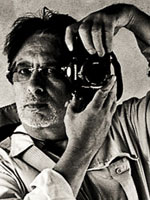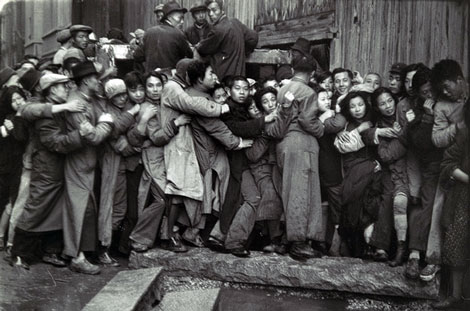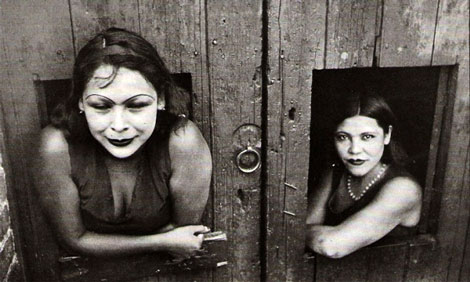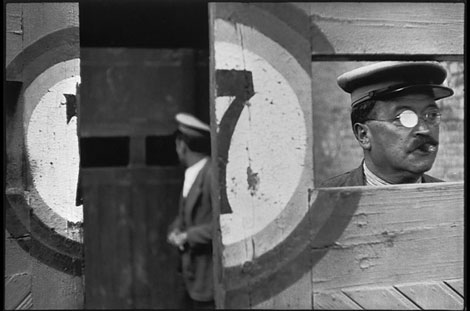
Many people say today’s digital imaging sensors deliver quality comparable to film. Two of today’s questions on many a photographer’s mind are: 1) The difference between digital and film photography, and; 2) Would Henri Cartier-Bresson have used a digital camera today?
Of course, we will never know. The master died in 2004, and towards the end of his life he wasn’t interested in photography anymore. Painting became his favorite pastime. Nevertheless, let’s give the imaginary assumption of a “digital Henri Cartier-Bresson a try, shall we?
As simple and straightforward as those two questions are, the opinions people have are varied, and often strong. The three most heard replies to these questions appear (deceptively) simple:
- Of course Henri Cartier-Bresson (HCB) would be using digital. He would choose the best camera gear available.
- Of course he would never stop using digital gear; he was an artist, not a technician.
- Who is HCB?
And so, let us take a look at these three responses, in reverse order.
3) Who is HCB?
HCB was God. O.K. not really god. He was god-like. Well alright then, not exactly god-like either. He was for some the greatest photographer that ever lived. For some the greatest and first real street photographer. Let me sum it up.
“In the beginning was the Word, and the Word was with God, and the Word was God.”
Whoa! Wrong story. Sorry for getting things mixed up here. But this is how some people feel about HCB. Yet the truth is, without HCB the world would still exist. Paris, maybe not, at least not as we know it today, as the city that almost grew together with HCB and whose stomping ground the city was. The city which was made by HBC as much as it made him. Or was it?
Let us look at the next answer and some of HCB’s work.
2) Of course he would never stop to using digital gear; he was an artist, not a technician.
That does not mean HCB would not have chosen digital. But since many photographers still prefer film, why would he have choosen digital.
One thing is, HCB simply grew up in an environment where photography was not as ubiquitous as it has become. I use the term “photography” loosely here. It would be like suggesting Shelley would be writing thrillers were he alive today. Or that Mozart would be composing by formula for Madonna. It may be the case, but taking someone out of their social/historical context is meaningless.
Beside that, HCB was also a life-long enthusiast of painting and drawing. He actually gave up photography later in life to concentrate on just that.
My guess is the digital option leads to a result so very different from the heart of the artist, HCB may have simply started as, remained and ended his life as a painter.
In order to better explain this, let us see what HCB photography was/is like. Get ready to toss aside any new fandangled pre-conceived ideas about the importance of sharpness and detail and clinical perfection.



The third image is of a TIME exhibition and if by now you can resist clicking on “next” and going through the other images, you have either not understood what good photography is, or you have no photographer’s soul.
I have chosen these images because they are not from Paris, as some people seem to erroneously believe HCB was imprisoned there as a photographer in a sort of artistic purgatory. HCB, born into a wealthy French family traveled the world and his vision showed the world, the world itself.
I would suggest, and some will deny this but I am adamant, the shown photographs would in no way be better than their film originals. In fact, I am of the opinion the digital, clinical aspect would take something essential away from these images, not add.
And so the argument could end. No. HCB would never have used digital. But… who knows. I see some photographers doing very interesting work with digital. But be that as it may, The soul of film may be one that can never be reincarnated in a digital world.
1) Of course HCB would be using digital. He would choose the best camera gear available.
I am not at all sure about this. The vast majority people stating such things are without a doubt digital camera enthusiasts themselves and possibly have never opened the back of a film camera.
Here we come to the crux of the matter, the essence of the question that revolves around the digital advocates intent on justifying their own use of digital, and brushing off the fact many have no clue about using film at all. For these the digital monopoly is confused with evolution. Oversimplified; the more megapixels the better the gear.
What exactly is the best camera gear? We have to look at HCB’s photographs and wonder what they would look like if they had been taken with digital, pro cameras.
Would HCB, more interested in some bizarre, personal way in the process itself than the resulting image be tempted to use digital gear? We would have to ask what advantage it would bring to him. Possibly none. But for the pro-digital photographer there is no question. HCB would have chosen the best digital gear available and go out shooting in the streets of Paris.
I find it curious in one interview HCB intimated he never looked at his photographs after they were printed. He said he was disinterested in this. It was the actual taking of the photograph, the moment itself that went beyond the result itself.
Of course therein lies both a justification for suggesting he would have used digital, and one to suggest the contrary. Not being all that interested in the result would suggest we could interpret this either way. We could therefore say “yes he would have used digital because the image itself was not so important for him”… or… ”why use digital if the resulting image was not that important?”.
In the end we realize this question is so full of potential for answers and discussions that only more questions will result. Not many answers.
But the one thing we can be thankful for is HCB lived when he did, made use of the photographic tools available, and gave us some of the most wonderful photographs we will ever see and cherish. For many, these photographs are reminders photography is more than striving to reach clinical perfection and that within the soul of photography rests a wealth of motivation few photographers can offer us, mere mortal beings.
In ending this writing I want to draw your attention to a small collection of HCB portraits. Set aside any preconceptions about how “perfect” and sharp and magazine-ready portraits should be. Look at these and I am sure, many will have enough insight to realize they need not learn to perfection the technical aspects, which in fact, although important take second place to the feeling with which one approaches the world of photography.
Who was it again said, “Let there be light”?
Postscript: Please note the above is a personal point of view and not a technical essay. Also note today well known and excellent photographers have adapted to the digital world. Possibly the most well known who comes to mind is Sebastião Salgado whose exceptional works are highly appreciated. His work though is of such a nature the actual image itself is less important than the message. But what wonderful images they are.
Numerous professional photographers have resorted to digital due to the demands made on them by those who pay their salaries or on whom they are reliant for making a living. Many of these photographers do though resort to film photography for their own pleasure.
There are also types of photography for which digital is essential, in particular where the importance of time, in other words the immediacy of the image’s availability is a determining factor. Photojournalism stands as an obvious example. A digital image can be online in minutes.
In the final analysis it is, as many say, the photographer who can make the best of whatever medium he or she uses. The medium used is a question of personal preference.


